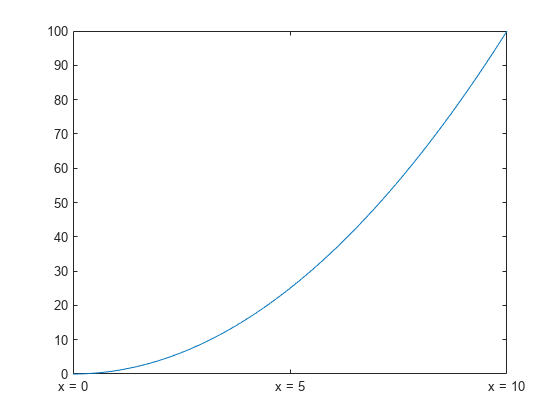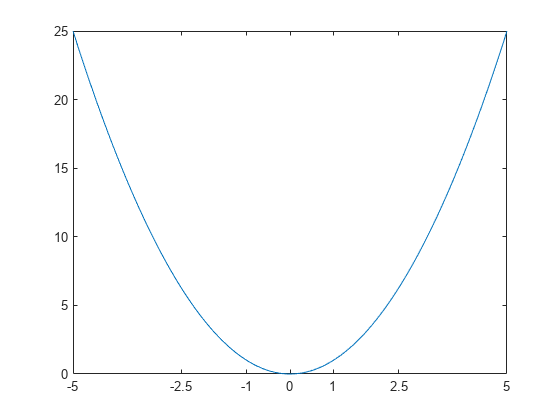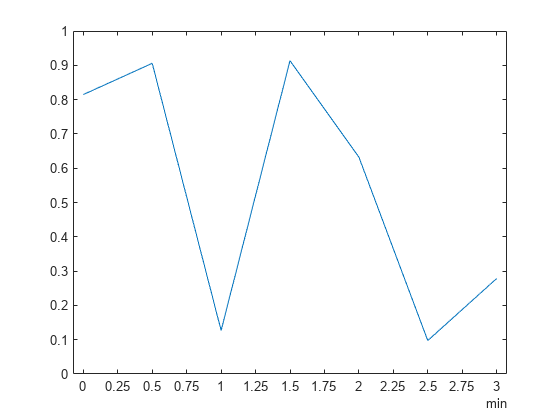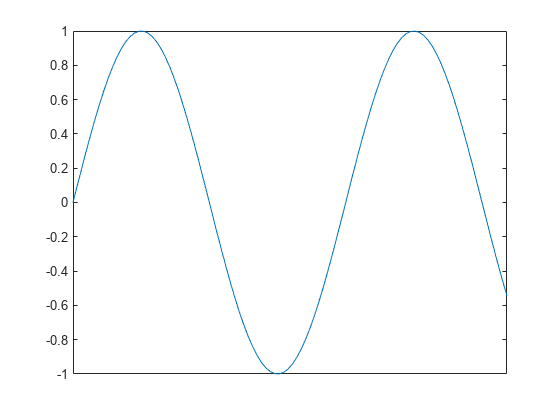xticks
x 軸の目盛り値の設定またはクエリ
説明
xt = xticks
xticks('auto') は、座標軸によって x 軸の目盛り値を決定できる自動モードに設定します。このオプションは、目盛り値を変更した後でそれらを既定値に戻す場合に使用します。
xticks('manual') は、x 軸の目盛り値を現在の値に固定する手動モードに設定します。このオプションは、座標軸のサイズ変更時や座標軸への新規データの追加時に、現在の目盛り値を保持する場合に使用します。
m = xticks('mode')'auto' または 'manual' のいずれかとして返します。目盛り値を指定したりモードを手動に変更したりしない限り、自動モードが既定で使用されます。
例
入力引数
出力引数
詳細
アルゴリズム
関数 xticks は、x 軸の目盛り値に関連するいくつかの座標軸プロパティを設定およびクエリします。
バージョン履歴
R2016b で導入











